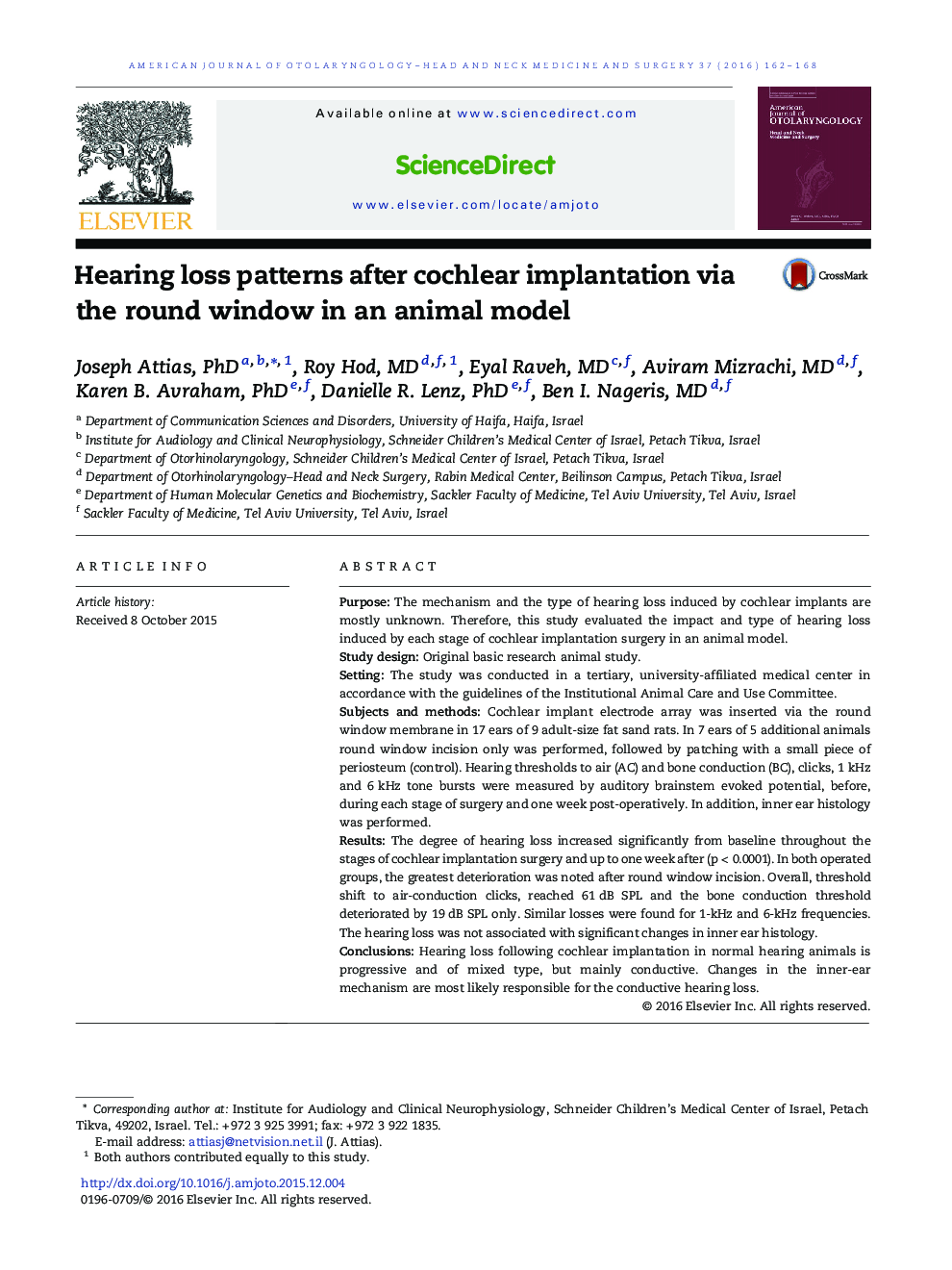| Article ID | Journal | Published Year | Pages | File Type |
|---|---|---|---|---|
| 4102978 | American Journal of Otolaryngology | 2016 | 7 Pages |
PurposeThe mechanism and the type of hearing loss induced by cochlear implants are mostly unknown. Therefore, this study evaluated the impact and type of hearing loss induced by each stage of cochlear implantation surgery in an animal model.Study designOriginal basic research animal study.SettingThe study was conducted in a tertiary, university-affiliated medical center in accordance with the guidelines of the Institutional Animal Care and Use Committee.Subjects and methodsCochlear implant electrode array was inserted via the round window membrane in 17 ears of 9 adult-size fat sand rats. In 7 ears of 5 additional animals round window incision only was performed, followed by patching with a small piece of periosteum (control). Hearing thresholds to air (AC) and bone conduction (BC), clicks, 1 kHz and 6 kHz tone bursts were measured by auditory brainstem evoked potential, before, during each stage of surgery and one week post-operatively. In addition, inner ear histology was performed.ResultsThe degree of hearing loss increased significantly from baseline throughout the stages of cochlear implantation surgery and up to one week after (p < 0.0001). In both operated groups, the greatest deterioration was noted after round window incision. Overall, threshold shift to air-conduction clicks, reached 61 dB SPL and the bone conduction threshold deteriorated by 19 dB SPL only. Similar losses were found for 1-kHz and 6-kHz frequencies. The hearing loss was not associated with significant changes in inner ear histology.ConclusionsHearing loss following cochlear implantation in normal hearing animals is progressive and of mixed type, but mainly conductive. Changes in the inner-ear mechanism are most likely responsible for the conductive hearing loss.
